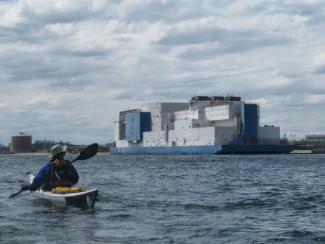
In 1992, a 625-foot barge opened in the East River. They named it the Vernon C. Bain Center, meant to relieve the overcrowding at Rikers Island. But in plain terms, it’s a floating jail in New York City, also known as “The Boat.”
Today, the population has gone from that height of 22,000 to under 6,000. But The Boat still sails.
Its conditions resemble the notorious Rikers - people incarcerated at The Boat don’t get to go outside or walk around. It’s practically windowless and moves with the water. It’s a “modern-day slave ship,” said Marvin Mayfield, imprisoned there in 2008.
The city claimed it will close The Boat by 2027, but the plan isn’t concrete enough yet. And the jail’s existence makes a critical point about incarceration.
Incarceration in general, but especially in constructions like The Boat, is designed to both physically and mentally separate non-incarcerated people from incarcerated people. Out of sight, out of mind.
It separates currently non-incarcerated people from the empathy they should have for people suffering from the violence of the criminal legal system, and incarcerated people from the hope of justice and freedom on land.
But the more we refuse that design, see incarcerated people, and care, the more we can fight to close these jails. It’s time to send people home.